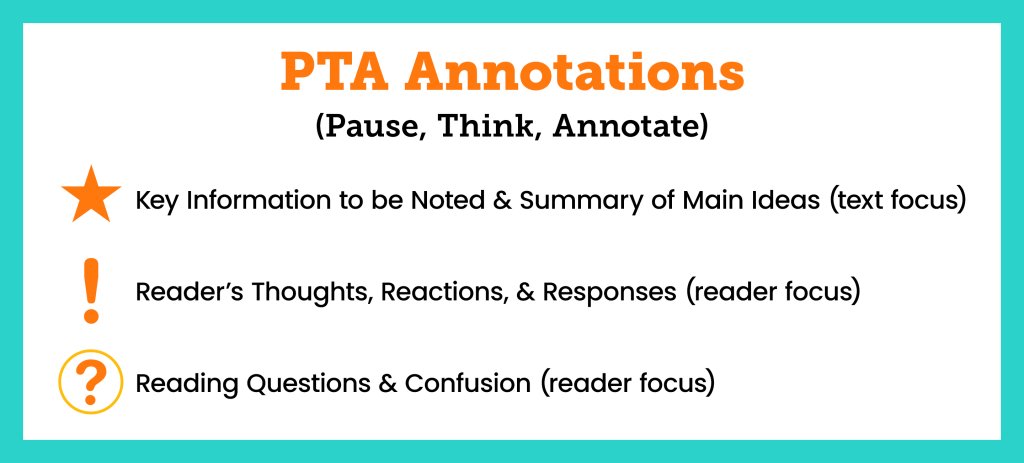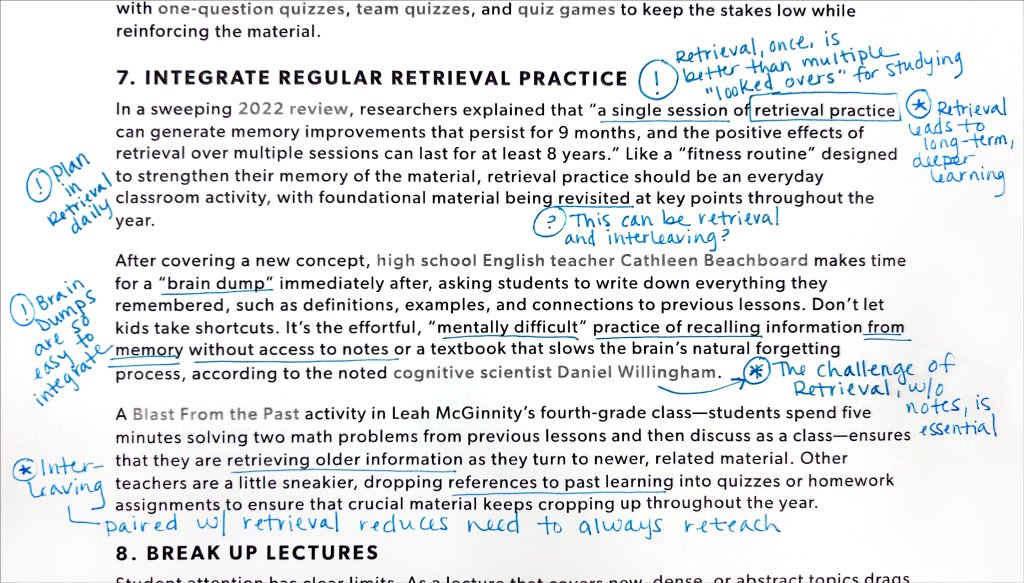A Simple and Effective Way to Teach Annotation
Try a straightforward three-step strategy to help students get comfortable with exploring challenging reading assignments.
Your content has been saved!
Go to My Saved Content.While much has changed in schools in recent years with technology, the need to read and write alongside a text remains a crucial component for learning. This type of writing, note-making as opposed to note-taking, combats the speed reading and passive reading we too often see from our students. If fake, rushed reading is problematic in your classroom, try fostering handwritten, responsive annotations instead.
Writing has always been an important partner to reading comprehension. Close reading is often illustrated via a student’s writing in response to a text. This writing can take many forms. This is where annotations come in. Annotating brings students back to the basics of school (reading and writing) while fostering engagement. If done well, it’s anything but basic, after all. Thoughtful annotation is an art and a skill. It provides a simple and effective solution to disengaged, surface-level reading, which is only exacerbated by devices. Annotating with pencil and paper brings students back to the process of learning, and it can be done with print texts and e-texts alike. Either way, the writing is the same.
Finding a Clear Way Forward With Annotation
So, what does good annotating look like? Is it different in each class? What about for each student? Do teachers have to teach it? The answer to these questions varies from teacher to teacher, and this lack of clarity is part of the problem with annotating. Many students don’t annotate, and thus they don’t engage with texts in meaningful ways because what is asked of them is harder than it has to be. I think we have to hold the line: teach annotation clearly, model it often, and stick to the basics rather than overcomplicate it. If schools can align on a system like this, students know what is expected of them and they do it, and they do it well with practice.
Teachers are told that all teachers are reading teachers, which I believe to be true, but when all teachers teach annotations differently, our students experience confusion. Teacher clarity around something as essential to learning as annotating is crucial. This type of annotation fosters note-making as an active learning habit, as opposed to passive reading. Because of this, I created an annotation system (with my beloved colleague Molly Harris) that can be applied to every class. It’s easy to adopt and adapt. It’s a universal tool for this foundational skill, and it has worked for my students time and again. Once it’s explicitly taught and frequently modeled, students know what is expected of them, and teachers don’t have to reteach and remind.
The Pause, Think, Annotate Strategy Supports Critical Thinking
The system is simple; I call it PTA—Pause, Think, Annotate. It’s catchy and easy to implement. The basics of this system are this: Annotations are specific and meaningful notes in the margin of a text. These notes are written during pauses in the reading process.

They aren’t highlights or underlines alone. “ANTs,” as I refer to them, are coded with three symbols: a star for important information and main ideas; an exclamation point for the reader’s reactions, responses, and connections; and finally, a question mark for reader questions, which can be curiosity questions and confusion questions. Note that only one of these is text-focused; the other two are reader-focused. This allows for a responsive reader, not just a regurgitator.
This system requires students to handwrite their notes in the margins because handwriting is beneficial for deeper learning and memory formation. It also allows for students to interact with their classmates using their annotations, in small group conversations and in writing to learn scenarios. Annotations are a stepping stone in the process of learning and collaborating. Instead of reading followed by awkward silence, I often ask students to share their thoughts and annotations and build on each other’s ideas.
Along with explicit teaching of annotation, I always model annotating for my students. Sometimes it’s a paragraph that I read aloud while annotating on the board. Sometimes I read the text on my own and take a picture of my annotations to show them. Either way, they can see how I make meaning from a text and how I integrate content-specific words; it gives them permission to do the same.

My annotations differ in each class that I teach because my thinking changes over time. I teach my students that this can happen for them too. Sometimes they’ll ask me how many annotations they should have, and I usually reply, “Well, how many thoughts are you going to have?” Annotations of quality far outweigh quantity. By modeling ANTs, students can see my thinking and learning and use it as a guide.
Make Annotation a Habit
I want my students to develop a habit of annotating, so I encourage and expect them to annotate everything we read in my classroom. Students aren’t reading as much as they used to, and assigned, academic texts are not being wrestled with as they should be. This system, with explicit teaching, modeling, and practice, brings the labor of learning back to our students. It asks them to slow down. It requires them to make notes on their page rather than speed-read, fake-read, or simply copy teacher notes from the board.
I love asking students to put away their texts and write about them, without notes, too. Annotations are great as a precursor to retrieval and writing to learn activities as well as formative assessments. For example, ask students to put away their text and annotations and write about them from memory in a brain dump. From there, have them pick one annotation to elaborate on or pick one part of the text they’re still struggling to understand, and compose a question to be asked in their small group.
You could also ask students to do a Tell Me 2 Things activity where they pull two things from the text that stuck with them to write about. Students who have read and annotated thoughtfully thrive in these types of challenges. Additionally, because I’m constantly circulating to provide brief feedback, I can prompt students who aren’t annotating or aren’t annotating well to get started, or I invite them to read with me for added support.
It’s increasingly important to teach and model for our secondary students how to interact with the texts they meet in school. Real, deep, meaningful reading comes from responsive readers more so than the texts we put in front of them. Skillful annotation is not a soft or basic skill; it is a crucial skill for reading and learning. Annotating might seem like an obvious or “old” academic strategy, but let’s not overlook its value or overcomplicate its process. When annotation systems are taught, modeled, aligned, and expected, across grade levels or schools, students are more likely to engage and succeed when reading challenging texts.
